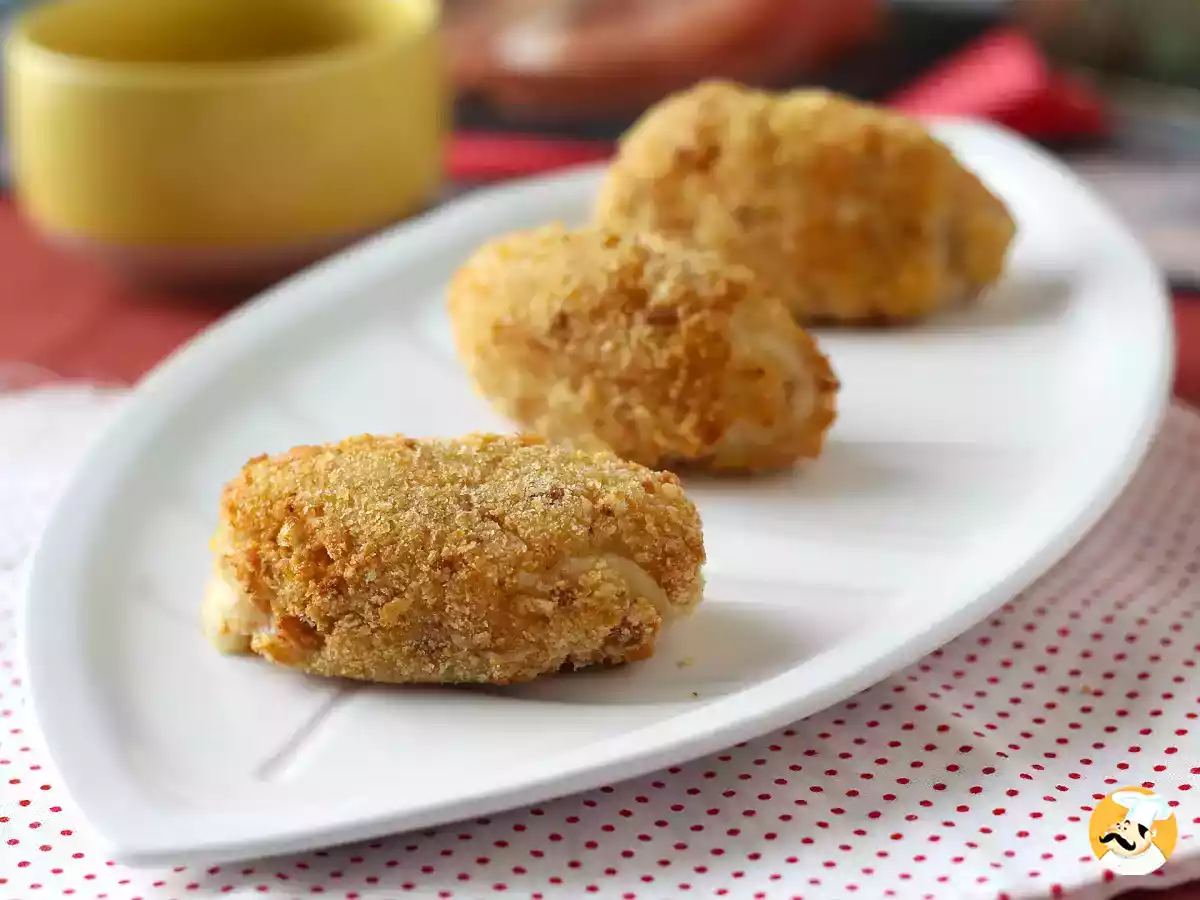The tricks you need to fry perfect Spanish croquetas and prevent them from exploding

In the Spanish culinary universe, few things arouse as much devotion as a good croqueta. This small morsel, capable of transforming the leftovers of the previous day, whether it be the meat from a stew or the remains of a roast chicken, into a delicacy worthy of ovations, reigns at the tables of bars, restaurants and homes. What is it about the croquette that provokes unanimity among the most demanding gourmets and the least pretentious diners? The answer lies in its alchemy: a creamy filling, based on béchamel sauce, that melts in every bite, wrapped in a golden and crunchy crust that makes them almost addictive.
But behind this heavenly result there is a trap that threatens even the most experienced: the crucial moment of frying. It may seem simple, but this is where many croquetas meet their most tragic fate. A few seconds in the oil are enough to shatter the illusion of a perfect appetizer, literally. Unexpected explosions leave the filling floating like a shipwreck in a sea of oil, turning excitement into frustration.
Why does this happen? What are we doing wrong? While croquetas were born to win us over, they also put us to the test. As guardians of their perfection, it is our duty to learn how to tame the process, especially that last crucial step. Today we'll unveil the tricks that ensure your croquetas survive the moment of truth intact. Because yes, frying croquetas is quite an art, and with the right techniques, you can master it.
Dough with too much moisture
The reason? A béchamel sauce that is too liquid causes the croquette to lose consistency and break when frying. The heat of the oil generates steam inside, creating a pressure that ends up making it explode.
How to avoid it: The key is to cook the béchamel sauce well. Make sure the mixture has a dense texture, allowing it to cool completely before shaping. Spread the dough on an elongated tray, cover it with food film or aluminum foil and put it in the refrigerator for at least 6 hours.
Insufficient breading
A loose batter is like a defective shield; it does not adequately protect the inner dough. Why it happens: If the batter coating is uneven or incomplete, the oil penetrates and destabilizes the structure.
Solution: Dredge each croquette in flour, beaten egg and breadcrumbs (or alternatives such as panko), making sure to completely cover the entire surface. If you want more security, repeat the egg and breadcrumb process.
Use little oil
The oil should completely cover the croquetas to ensure even cooking and to quickly form a crust that holds the filling. If you use too little oil, the batter will be uneven and the filling may leak out, causing the croquetas to crack and the filling to run out.
Tip: Fill the frying pan or deep fryer with enough oil and make sure it is very hot before frying. Always use quality oil. You can use extra virgin olive oil, high oleic sunflower oil or even refined coconut oil.
Oil at incorrect temperature
An oil that is too cold soaks the croquetas, while one that is too hot causes thermal shocks that break them. Culinary science: The ideal temperature is between 345°F/175ºC and 355°F/180ºC, just enough to seal the batter quickly without burning it or leaving it raw.
Frying many croquetas at the same time
Frying too many croquetas at the same time lowers the oil temperature, leaving the batter soft and allowing the croquettes to absorb more fat. This increases the risk of the croquetas breaking during cooking.
Tip: Fry in small batches to keep the oil temperature constant and obtain crispy, perfect croquetas.
Freezing them badly before frying them
Thermal shock is your kibble's worst enemy. If you fry them directly from the freezer, the temperature difference generates cracks and could cause explosions.
Solution: If your croquetas are frozen, thaw them (in the refrigerator) slightly before frying.
Rough handling in oil
Moving them too soon or with unsuitable utensils can break the outer layer that is not yet hard and cause the filling to come out.
Avoid this: Use skimmers and give them time for the batter to harden a bit before moving them with the skimmer.
Time to put on your apron
Preparing perfect croquetas requires attention to detail and some patience, but the effort is worth it when you pull those golden, crispy, ready-to-eat pieces out of the oil. By following these tips, the risk of explosions will be drastically reduced, and your croquetas will be the center of attention at any table.

Air fryer spanish croquetas: little oil but still just as crispy!

Croquetas with serrano ham - classic spanish tapas
You may also be interested in:
[article: 5840]
[article: 5597]
[article: 5612]
Comments